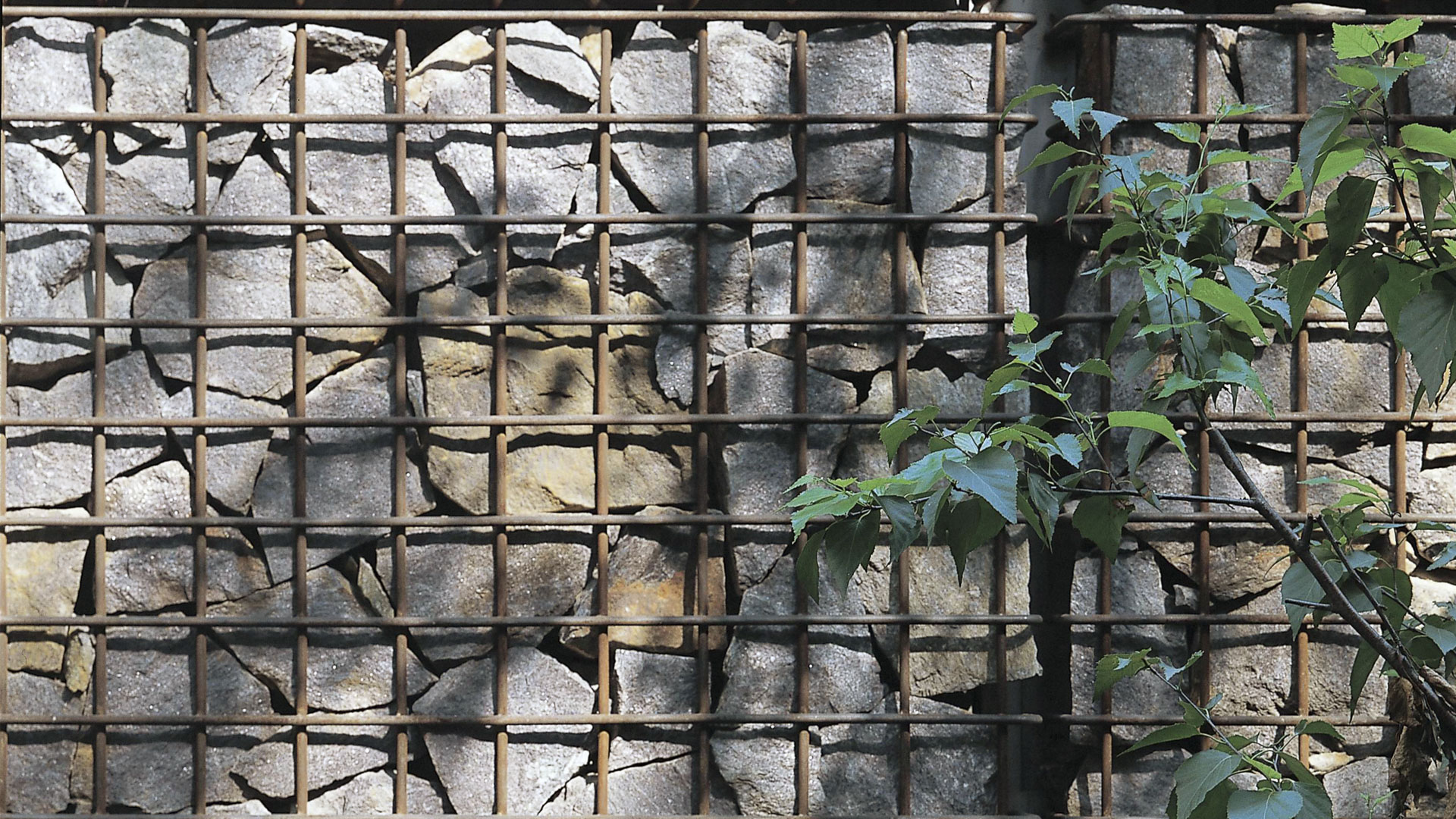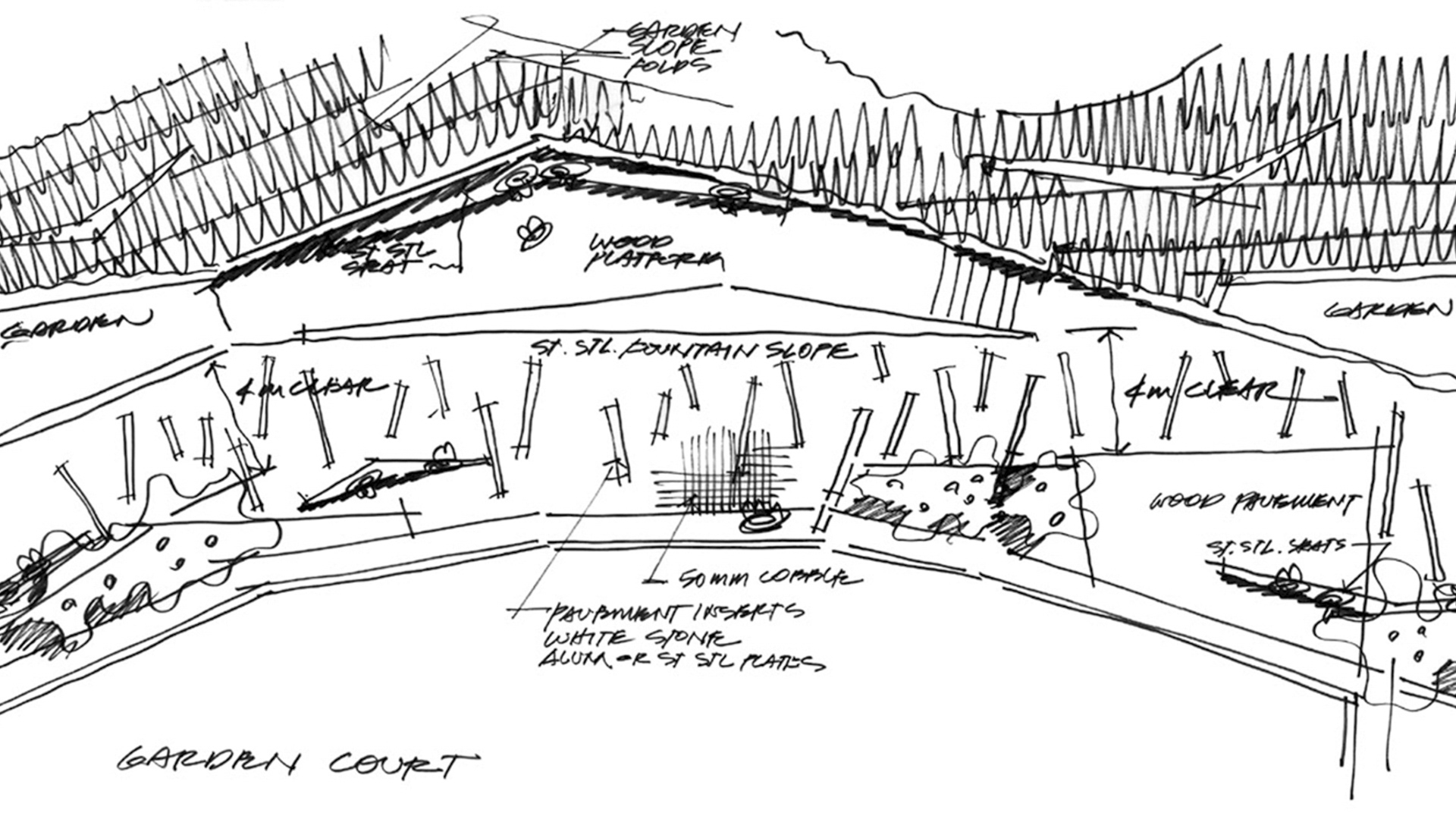From its mountainside perch overlooking Seoul, the Samsung Museum of Art Complex boasts museums by three of the world’s most sought-after architects: Rem Koolhaas, Jean Nouvel and Mario Botta. Uniting these remarkable yet divergent works of architecture is a space of clean and powerful gestures. This elegant, understated landscape serves as their matrix and must perform multiple duties: make a welcoming first impression; connect with local transportation to orchestrate the visitor’s journey to and through the complex; and function as a stage for viewing the architectural ensemble and the sculptures.
Complementing rather than competing with its muscular surroundings, the landscape is designed to provide the visitor with a rich visual palette. She might rest on the long seat occupying the central platform; pause to admire the views from a series of terraced platforms leading down the slope, or enjoy the native plantings of azaleas, pine trees, densely-planted birch trees offsetting Nouvel’s dramatic gabion walls, and bamboo culms which serve as a backdrop for a fleetingly glorious mass of bulbs, all in muted shades of blue-gray. A directional paving pattern, identity graphics, and LED art installations help guide movement through the site. This dynamic, architectural landscape takes full advantage of its extraordinary setting, mediating between the fixed structures of the buildings and artworks and the sensory surprises of the urban garden in constant flux.
University of Chicago Booth School of Business
This project regenerates a spectacular, historic cliff-side waterfront site by activating it with new purpose. Working carefully to interweave layers of preservation and natural beauty, the building and landscape work together to leave a light footprint. Today, a distinctive global campus honors the history of its earlier occupation while providing inspiration...
Medgar Evers College
This new quad provides a unifying pedestrian connection between Bedford and Franklin Avenues and between existing and new campus buildings, finally providing the campus with a cohesive identity and sense of place. With the dramatic transformation of a parking lot into more campus green space comes the opportunity to integrate a series of sustainability strateg...
Gantry Plaza State Park
Once a working waterfront teeming with barges, tugboats, and rail cars, the Hunter’s Point shoreline of Queens slowly succumbed to the realities of the post-Industrial Age. As the last rail barge headed into the sunset, this spectacular site was left to deteriorate to a point of community shame. As part of the Queens West Parks Master Plan, Thomas Balsley Asso...
Kasumigaseki Plaza Renewal
The Kasumigaseki building is Tokyo’s first high-rise and architectural landmark, located in the heart of downtown Tokyo where government as well as major private business offices are concentrated. Urban growth changed the dynamics of the building’s surroundings and left its public spaces ineffective and barren. The addition of new mixed-use building provided t...







